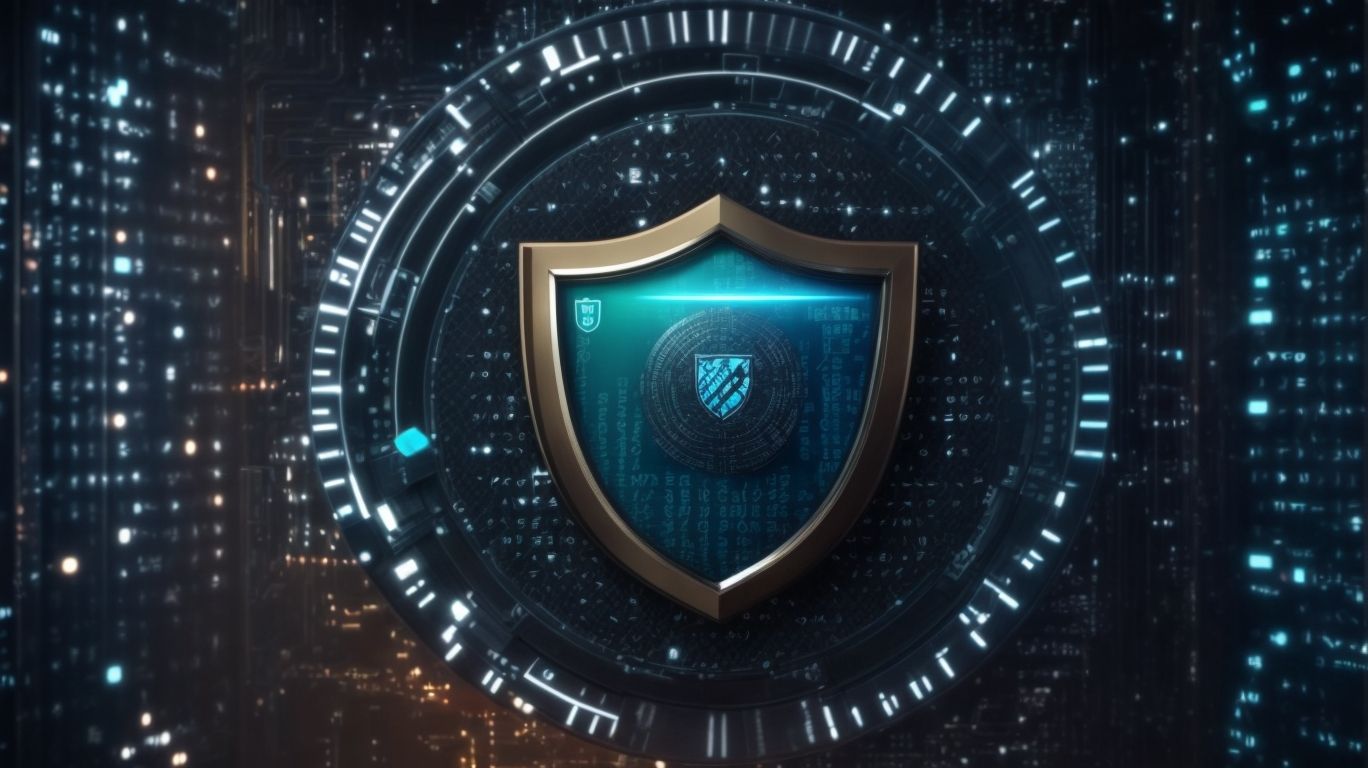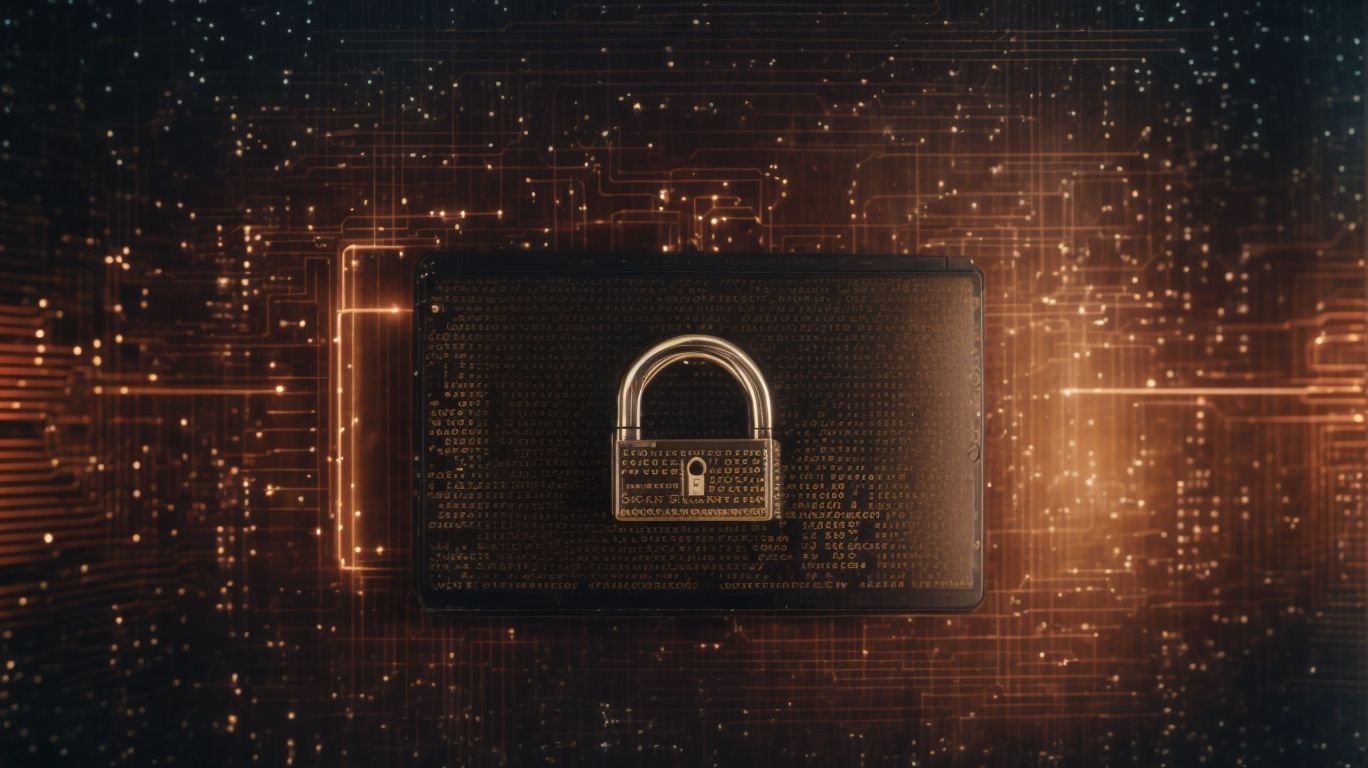In today’s digital age, the need for secure communications has never been more crucial. Cryptography plays a vital role in ensuring the confidentiality, integrity, and authenticity of sensitive information exchanged over networks.
From encrypting data to verifying digital signatures, cryptography utilizes complex algorithms to safeguard communications from prying eyes and malicious attacks.
This article will explore the different types of cryptography, key components, and how it is used to secure data transmission, authenticate users, maintain data integrity, and prevent fraud.
Discover the advantages of leveraging cryptography in secure communications for enhanced privacy, data protection, fraud prevention, and regulatory compliance.
Table of Contents
Key Takeaways:
Cryptography is the science and art of securing communication through the use of mathematical algorithms.By utilizing various techniques such as encryption, decryption, hashing and digital signatures, cryptography ensures secure communication by protecting data integrity, authenticity, and confidentiality.The use of cryptography in secure communications offers advantages such as privacy, data protection, fraud prevention, and compliance with regulations, making it an essential tool in today’s digital world.
What Is Cryptography?
Cryptography, a cornerstone of information security, is the practice of securing data and communication through the use of algorithms and keys to protect confidentiality, integrity, and authenticity.
Encryption plays a vital role within the realm of cryptography, where data is converted into a form that can only be read by individuals with the appropriate decryption key. This process ensures that sensitive information remains hidden from unauthorized entities. In today’s digital age, cryptography is crucial for safeguarding transactions, passwords, and other sensitive data transmitted over networks. By utilizing cryptographic techniques, organizations can enhance their defenses against cyber threats and potential data breaches, thereby fostering trust and security in the digital domain.
How Does Cryptography Ensure Secure Communications?
Cryptography ensures secure communications by encrypting messages, providing authentication mechanisms, and safeguarding privacy through robust encryption algorithms and secure key management.
Encryption, a fundamental aspect of cryptography, involves converting plaintext into ciphertext using complex mathematical algorithms and cryptographic keys. This ensures that any intercepted data remains unreadable to unauthorized individuals.
Authentication mechanisms, such as digital signatures and certificates, verify the identities of communicating parties, preventing malicious entities from impersonating others.
Secure key management plays a crucial role in safeguarding encrypted data, ensuring that keys are generated, exchanged, and stored securely to maintain the confidentiality and integrity of communications.
What Are the Different Types of Cryptography?
Various types of cryptography include symmetric-key encryption, public-key encryption, digital signatures, and emerging technologies like quantum cryptography, each offering distinct approaches to securing data and communication.
Starting with symmetric-key encryption, it utilizes a single key to both encrypt and decrypt data, making it efficient for bulk data transfers.
On the other hand, public-key encryption operates with a pair of keys – a public key for encryption and a private key for decryption, enhancing security by keeping the private key secret.
Digital signatures play a crucial role in verifying the authenticity and integrity of messages or documents through mathematical algorithms.
Quantum cryptography harnesses quantum mechanics to provide provable security against quantum attacks, promising enhanced protection for sensitive information in the future.
Symmetric Cryptography
Symmetric cryptography utilizes a single key to both encrypt and decrypt data, employing algorithms designed to ensure secure communication between parties sharing the same secret key.
This method of encryption is based on the premise that the sender and receiver must agree on a secret key that is kept private from outsiders, allowing them to communicate securely. One of the most commonly used symmetric-key algorithms is the Advanced Encryption Standard (AES), which encrypts data in fixed-size blocks. AES has gained popularity for its high level of security and efficiency. When a sender encrypts a message using AES, they send the encrypted data along with the secret key to the receiver, who can easily decrypt the message using the same key.
Asymmetric Cryptography
Asymmetric cryptography uses a pair of keys, public and private, for encryption and decryption, with popular algorithms like RSA and ECC ensuring secure communication over insecure channels.
Public-key encryption, a fundamental concept in modern cryptography, operates on an ingenious principle where data encrypted with one key can only be decrypted with the other key in the pair. This asymmetry forms the core of asymmetric cryptography, offering heightened security and flexibility compared to traditional symmetric encryption.
The RSA (Rivest–Shamir–Adleman) algorithm, named after its inventors, is widely used for secure data transmission and digital signatures. On the other hand, ECC (Elliptic Curve Cryptography) employs elliptic curves to provide comparable security with smaller key sizes, making it efficient for resource-constrained devices.
One of the key advantages of asymmetric cryptography is its ability to facilitate secure communication over insecure channels, enabling parties to exchange sensitive information without prior key exchange. This property makes it crucial for various applications ranging from secure online transactions to data integrity verification.
What Are the Key Components of Cryptography?
The key components of cryptography include encryption for data protection, decryption for information retrieval, hashing for data integrity verification, and digital signatures for authentication and non-repudiation.
Encryption is the process of transforming plaintext into ciphertext, making it unreadable to anyone except those possessing the appropriate decryption key. It ensures confidentiality and privacy of data during transmission or storage. Decryption, on the other hand, reverses this process, converting encrypted data back into its original form.
Hashing generates a unique fixed-length string of characters, called a hash value, based on the input data. It is used primarily for validating data integrity, as even a tiny change in the input results in a completely different hash value.
Digital signatures involve using cryptographic algorithms to create a unique digital fingerprint of a message or document. This fingerprint, along with the signer’s public key, allows anyone to verify the authenticity and integrity of the signed content without the need for the signer to be present. Digital signatures play a crucial role in ensuring the non-repudiation of transactions and communications, adding an extra layer of trust and security.”
Encryption
Encryption is the process of encoding data to ensure secure transmission and storage, employing complex algorithms to convert plaintext into ciphertext for confidentiality.
One of the key reasons why encryption is crucial in today’s digital age is to protect sensitive information from unauthorized access. Through encryption, data is transformed into a format that is unreadable without the respective decryption key, thereby safeguarding it from prying eyes.
Various encryption techniques exist, each with its unique approach to securing data. Symmetric key encryption, where the same key is used for both encryption and decryption, is efficient for bulk data transfers. In contrast, asymmetric key encryption utilizes a pair of keys – public and private, enhancing security by separating the keys for encryption and decryption.
Decryption
Decryption is the reverse process of encryption, where encrypted messages are decoded back to their original form using specific keys to recover the plaintext data.
When decryption occurs, the encrypted data is transformed through algorithms that require a key to reverse the encryption process. These keys serve as the secret codes necessary for decrypting the information back into its readable format.
Understanding the role of keys in decryption is crucial, as they are the vital components that enable secure communication and data protection. Without the correct key, the decryption process becomes virtually impossible, emphasizing the importance of safeguarding these keys to prevent unauthorized access to sensitive information.
Hashing
Hashing ensures data integrity by generating fixed-length hash values through cryptographic hash functions, enabling verification of data integrity and detecting any tampering or corruption.
When data is hashed, the original information is transformed into a unique hash value, acting as a digital fingerprint that represents the content.
This process is vital for ensuring that data remains unchanged during storage or transmission, as any alteration to the information would result in a completely different hash value.
By comparing the current hash value to the previously generated one, data integrity can be verified with high accuracy.
Cryptographic hash functions play a crucial role in this process, as they are designed to be highly resistant to reverse engineering, making it extremely difficult for attackers to tamper with the data without detection.
Digital Signatures
Digital signatures provide authentication and non-repudiation in secure communications by digitally signing messages, ensuring the integrity and origin of the sender while preventing denial of involvement.
Digital signatures play a crucial role in ensuring the authenticity of electronic documents by using cryptographic techniques to verify the identity of the sender and the integrity of the message contents. This process involves the use of public and private key pairs, where the sender encrypts the message with their private key, and the recipient can decrypt it using the sender’s public key for verification.
The concept of non-repudiation is fundamental in digital signatures, as it prevents the sender from denying their involvement in the transmission of the message. This attribute is vital in legal and business transactions where a sender’s commitment or authorization needs to be irrefutable.
How Is Cryptography Used in Secure Communications?
Cryptography plays a vital role in secure data transmission by encrypting information to prevent unauthorized access and providing robust authentication mechanisms to verify the identities of communicating parties.
The applications of cryptography extend far beyond just securing data transmission. It is also widely used in ensuring the integrity and confidentiality of sensitive information across various digital platforms such as online banking, e-commerce transactions, and secure messaging services. Authentication procedures in cryptography involve processes like digital signatures, biometric scans, and secure login methods to validate the identity of users and ensure secure communication channels.
Secure communication relies heavily on encryption methods like symmetric key cryptography, asymmetric key cryptography, and hashing algorithms to ensure that data is transmitted securely and received only by the intended recipients. By employing these advanced encryption techniques, organizations can protect their sensitive information from cyber threats and unauthorized access.
Secure Data Transmission
Secure data transmission utilizes encryption protocols like TLS to safeguard information during transit, ensuring the confidentiality and integrity of data exchanged over networks or API communications.
Transport Layer Security (TLS) is a critical component in maintaining data security, establishing encrypted connections between devices or servers. This encryption process involves multiple steps, including key exchange and authentication, to ensure that only authorized parties can access the transmitted data. When integrated with API communication, secure data transmission through TLS adds an extra layer of protection, preventing unauthorized access and potential data breaches. This secure transmission mechanism is vital for businesses dealing with sensitive information, such as personal data, financial transactions, or proprietary data.
Authentication
Authentication in cryptography involves verifying the identities of communicating parties through secure key management practices, ensuring data integrity and preventing unauthorized access to sensitive information.
Effective authentication mechanisms play a crucial role in maintaining the security of digital communications. By utilizing secure key management strategies, organizations can establish trust and confidentiality in their data exchanges. Data integrity, a core aspect of authentication processes, ensures that information remains unaltered during transmission, safeguarding it from potential tampering or malicious attacks.
Data Integrity
Data integrity mechanisms in cryptography use algorithms to verify that data remains unchanged and uncorrupted during transmission, maintaining the accuracy and reliability of information exchanged between parties.
One of the fundamental aspects of data integrity is the prevention of unauthorized modifications or tampering of data, ensuring the trustworthiness of sensitive information. Cryptographic algorithms play a crucial role in achieving this by generating hash values or digital signatures that act as unique fingerprints to validate the integrity of data. By employing robust encryption techniques, such as AES (Advanced Encryption Standard) or RSA (Rivest-Shamir-Adleman), organizations can safeguard their communications from unauthorized alterations, mitigating the risks of data manipulation or interception.
Non-repudiation
Non-repudiation through digital signatures ensures that communicating parties cannot deny their involvement in transactions, enhancing privacy protection and accountability in secure communication environments.
Non-repudiation is a critical aspect of secure communication, verifying the identity of the sender and ensuring the integrity of the transmitted message. Through the use of digital signatures, this concept is reinforced by providing a digital seal of authenticity that proves the origin and integrity of the communicated data. Digital signatures utilize cryptographic techniques to create unique identifiers for each transaction, making it extremely difficult for malicious actors to tamper with or forge messages without detection.
What Are the Advantages of Using Cryptography in Secure Communications?
Utilizing cryptography in secure communications offers significant advantages such as enhanced privacy and confidentiality, robust data protection, prevention of fraud, and compliance with regulatory requirements.
When cryptography is implemented, the communication channel becomes secure, ensuring that only the intended parties can access the information shared. This level of privacy protection is crucial in today’s digital age, where sensitive data is constantly exchanged. The robust data protection mechanisms provided by cryptography safeguard information from unauthorized access or manipulation, bolstering the overall security posture of organizations.
The prevention of fraud is a key benefit of employing cryptography. By using encryption techniques, the integrity and authenticity of data are preserved, making it extremely challenging for malicious actors to tamper with or forge information.
Privacy and Confidentiality
Privacy and confidentiality are maintained through encryption, ensuring that sensitive information remains secure and accessible only to authorized recipients, safeguarding privacy in communication channels.
Cryptography, the science of securing communication, plays a vital role in ensuring data protection. Encryption, a fundamental aspect of cryptography, transforms plaintext into ciphertext, making it incomprehensible to unauthorized individuals. By using complex algorithms, encryption mechanisms encode data, making it secure during transmission and storage.
Through secure communication protocols, such as SSL/TLS, sensitive information like financial transactions, personal messages, and login credentials are shielded from prying eyes. This defense mechanism not only prevents data breaches but also fosters trust between parties involved in digital exchanges.
Data Protection
Data protection mechanisms in cryptography safeguard information from unauthorized access, ensuring secure communication channels and maintaining data integrity to prevent tampering or corruption.
Cryptography utilizes algorithms and techniques to encrypt data, making it unreadable to anyone without the decryption key. This plays a crucial role in securing sensitive information, not only during transit but also when stored on servers or in the cloud. By implementing strong encryption methods, organizations can mitigate the risks of data breaches and unauthorized interception.
Secure communication practices such as SSL/TLS protocols and VPNs add layers of protection to data transmission, safeguarding it from potential eavesdropping attacks.
Prevention of Fraud
Cryptography aids in preventing fraud by employing robust authentication methods and digital signatures to verify the integrity of transactions, reducing the risk of unauthorized access and fraudulent activities.
Authentication plays a critical role in ensuring that only authorized parties can access sensitive information and carry out transactions securely. Through the use of encryption and cryptographic keys, authentication mechanisms verify the identities of users and entities involved in a transaction. Digital signatures further enhance security by providing a way to confirm the authenticity and integrity of data exchanged between parties, making it difficult for fraudsters to tamper with or manipulate sensitive information.
Compliance with Regulations
Cryptography ensures compliance with regulations by implementing robust data security measures, protecting privacy, and facilitating secure communication channels that meet regulatory requirements and standards.
Regulatory compliance is a crucial aspect of the modern digital landscape, with stringent regulations like GDPR and HIPAA governing how organizations handle sensitive data.
By utilizing strong encryption algorithms, cryptography plays a pivotal role in ensuring that data is safeguarded against unauthorized access and cyber threats.
Data security practices involve not only encryption but also key management, access controls, and authentication mechanisms to maintain the integrity and confidentiality of information.
Through the use of cryptographic techniques, organizations can establish a secure environment that aligns with privacy protection requirements set forth by regulatory bodies. https://www.youtube.com/embed/4M8_Oo7lpiA
Frequently Asked Questions
What is the role of cryptography in secure communications?
Cryptography plays a crucial role in ensuring the confidentiality, integrity, and authenticity of sensitive information transmitted over networks.
How does cryptography protect communication networks?
By using mathematical algorithms and encryption techniques, cryptography helps to scramble and hide data, making it unreadable to anyone without the proper decryption key.
Why is cryptography an essential part of secure communications?
In today’s digital world, where cyberattacks are becoming increasingly common, cryptography is necessary to protect sensitive information and prevent unauthorized access to communication networks.
What are the different types of cryptography used in secure communications?
Some common types of cryptography include symmetric key encryption, asymmetric key encryption, and hashing algorithms, each serving different purposes in securing communications.
How does cryptography ensure the confidentiality of information?
By using encryption, cryptography makes it nearly impossible for anyone to intercept and read sensitive information being transmitted over communication networks, ensuring its confidentiality.
Can cryptography guarantee secure communications?
While cryptography is an essential component of secure communications, it is not a foolproof solution. Other factors such as network security protocols and user awareness also play a role in ensuring secure communication.







